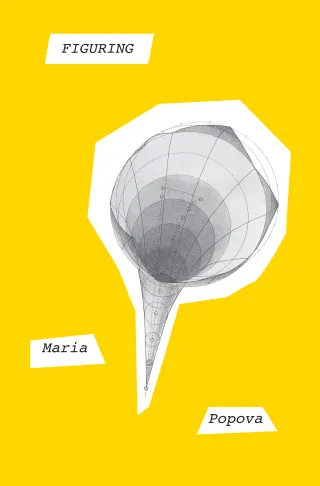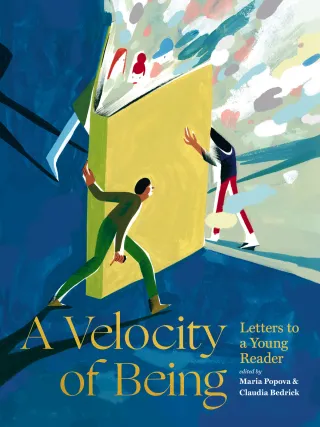
In the garden, we are "kneeling between the scale of seeds and the scale of stars...."
- Maria Popova
This week, a pre-Solstice offering for Cultivating Place listeners!
Maria Popova is the creator and writer behind The Marginalian (formerly known as Brain Pickings), which, for the past 16 years has been a daily—perhaps even hourly—exploration of wonder in our world as seen through the lenses of how we as humans express ourselves in our own creativity, our intellectual curiosity, our sadnesses and griefs, and in our greatest loves and joys.
Gardening and gardeners are recurringly among the human endeavors Maria has explored these many years. For me, this is a bright light of a conversation in the best spirit of quantum gardening as we near our longest night and just before we begin tending back toward toward the light once again.
"We can never overestimate the quiet grandeur of these private acts that ripple out…"
- Maria Popova
Maria is also the founder and producer since 2017 of the annual charitable celebration and gathering of voices known as The Universe In Verse; she is the author of several solo and collaborative titles, including Figuring, as well as The Snail with the Right Heart, a true story illustrated by Ping Zhu, and The Velocity of Being, Letters to a Young Reader edited by Maria and Claudia Bedrick, a series of letters from beloved well-known and little known writers to young readers about the power of reading in one’s life.
All images courtesy of Maria Popova; All rights reserved.
Follow The Marginalian online: themarginalian.org and on Instagram: @mariapopova/
HERE IS THIS WEEK'S TRANSCRIPT by Doulos Transcription Service:
IF YOU LIKE THIS PROGAM,
you might also enjoy these Best of CP programs in our archive:
Generosity & Mutual Care of Seeds, K Greene Hudson Valley Seeds
JOIN US again next week, when we explore the importance and heart behind community-based and community led ecology in conversation with naturalist and activist Cris Sarabia, or the Palos Verdes Peninsula Land Conservancy . Listen in.
Speaking of plants... and place:
It is fully winter in the Northern Hemisphere and for many that comes with the seasonal return of citrus, ripening here and now wherever citrus grows and being shipped around the globe as winter gifts of great goodness. Based on the story Maria Popova Shared in our Cultivating Place conversation about growing them from seed, this week we dig into the beloved so-called Meyer Lemon, which for most growers or eaters since 1975 is actually the so-called Improved Meyer Lemon – Citrus x meyeri.
First grown in China, a cross between a regular lemon and a mandarin, the Meyer lemon was introduced to the US early in the 20th century by American agricultural explorer, Frank Meyer. The Meyer lemon was soon grown across the US, especially in the citrus growing regions of Florida, Texas, and California. The original Meyer lemon was however prone to pests and disease, and according to a 2009 NPR report from Julie O’Hara, in the 1960’s nearly the entire population of Meyer lemons was killed by viral disease, endangering all of the state’s citrus crops. BUT - from survivors of this disease, the dwarf Improved Meyer Lemon was introduced to the trade by the University of California in 1975 and has flourished since with all the joys of the Meyer lemon and far less of its susceptibilities. Although Florida is struggling with a citrus blight right now that has eliminated a good percentage of the homegrown Meyer lemons there.
The joys of the tender and sweet Meyer lemon include its smooth, thin, edible rind, and its quantity of juice – juice characterized by other joys of the fruit: sweeter, less acidic, and far more aromatic than other lemons. These strengths of the Meyer Lemon are of course correlated with the Improved Meyer lemon’s challenges as well: the thin skin means it does not store as well, nor does it ship as well – making it a treasured seasonal gift – and protecting it from easily becoming only a commodity.
Hardy planted out of doors from zones 8 – 11, the improved, dwarf Meyer lemon is also easily grown in a pot and brought inside in the coldest months in cold climates, as Maria Popova bears witness, having grown her first Meyer lemon from seed indoors in Bulgaria in the 1980s. In inter-zones, like mine, make sure to cover your outside trees on nights when a hard frost (below 28 degrees) is in the forecast. Meyer lemon plants are self-fertile, and will produce fruit in as few as two years, and grow to 7 or so feet but do not mind being kept pruned to a more managebale size for their space – above and below ground. Once going, the plants like regular water, allowing soil to dry-out between waterings, and regular food every 6 to 8 weeks or so from the time they stop producing fruit and begin to bloom again in mid-winter until their fruit set in the next season in early summer
Meyer lemon’s fruiting season begins in November and extends into March or so. And like most citrus, they like full sun – 8 - 12 hours every day of direct sunlight, even here in Northern California – their foliage protecting their fruits from sunburn. To avoid pests, diseases and things such as scale cutting back the dense interior growth of the plant to allow for better sunlight and air circulation, water at the soil and base of your trees in the ground or in pots, rather than overhead to keep the structure of the plant dry.
Here in our gardens Meyer lemons are fragrant gifts of the season for others, and their juice and zest will brighten baking, lemon curd, and table decorations - even your summer lemonade if you freeze the juice and zest - reminding us that beauty, health, and treasure are often grown and come in small, colorful plant-packages. Once you meet the bright sweet scent and tang of a Meyer lemon yourself, you will not forget it.
Thinking out loud this week:
In the last 12 months Cultivating Place has been downloaded more than 1 million times. This surpasses by a lot the number of downloads in any of our previous years of tracking such things. And one of the great takeaways for me is that The two unifying themes of the most listened to episodes are these: gardeners as caring stewards of biodiversity reweaving us into our wilder world; and, Gardens as sacred spaces, where we engage with the divine universal spirit, and make meaning in our collective lives. It is an honor to take part in weekly conversations that grow us and our places in these exact loving and germinating ways. I am so grateful for your support in this work, and grateful to know you’re out there listening and growing along – cultivating your places.
There's an embodied lesson from the garden in Maria being in conversation with me today. As a handful of you dedicated Cultivating Place listeners have reached out to me over the past few years wondering if I might invite Maria to the program, I finally did just that this past summer. Maria, very kindly got back to me, and politely declined the invitation. I was, of course, disappointed, but I also understood and. in my reply to her explanation around this, I offered that if she ever thought she might like to be in conversation, I would love to leave this invitation open to her. Several months later, Maria did reach back out to me to say that, after listening to the program, she would love to be in conversation with me about the prismatic ways, and means of cultivating our places. And I was delighted.
The lesson here is a lesson I get from the garden over and over again these last 50 or so years: Keep planting seeds of those lives in whose presence you would like to grow yourself, and eventually they will germinate.
Happy winter dormancy, winter solstice, and slow tending back toward the light – but not right now – for right now, we rest.
I send you each my garden hearted best for this solstice and holiday season, Happy New cycle around the sun.
WAYS TO SUPPORT CULTIVATING PLACE
SHARE the podcast with friends: If you enjoy these conversations about these things we love and which connect us, please share them forward with others. Thank you in advance!
RATE the podcast on iTunes: Or wherever you get your podcast feed: Please submit a ranking and a review of the program on Itunes! To do so follow this link: iTunes Review and Rate (once there, click View In Itunes and go to Ratings and Reviews)
DONATE: Cultivating Place is a listener-supported co-production of North State Public Radio. To make your listener contribution – please click the donate button below. Thank you in advance for your help making these valuable conversations grow.
Or, make checks payable to: Jennifer Jewell - Cultivating Place
and mail to: Cultivating Place
PO Box 37
Durham, CA 95938


















Kudos for this enlightening post! Multi Recruit continues to innovate in the world of talent acquisition.
Cultivating Place celebrates the lessons from the garden, MapQuest Route Planner reminding us of the beauty and significance in both the small and grand aspects of life.